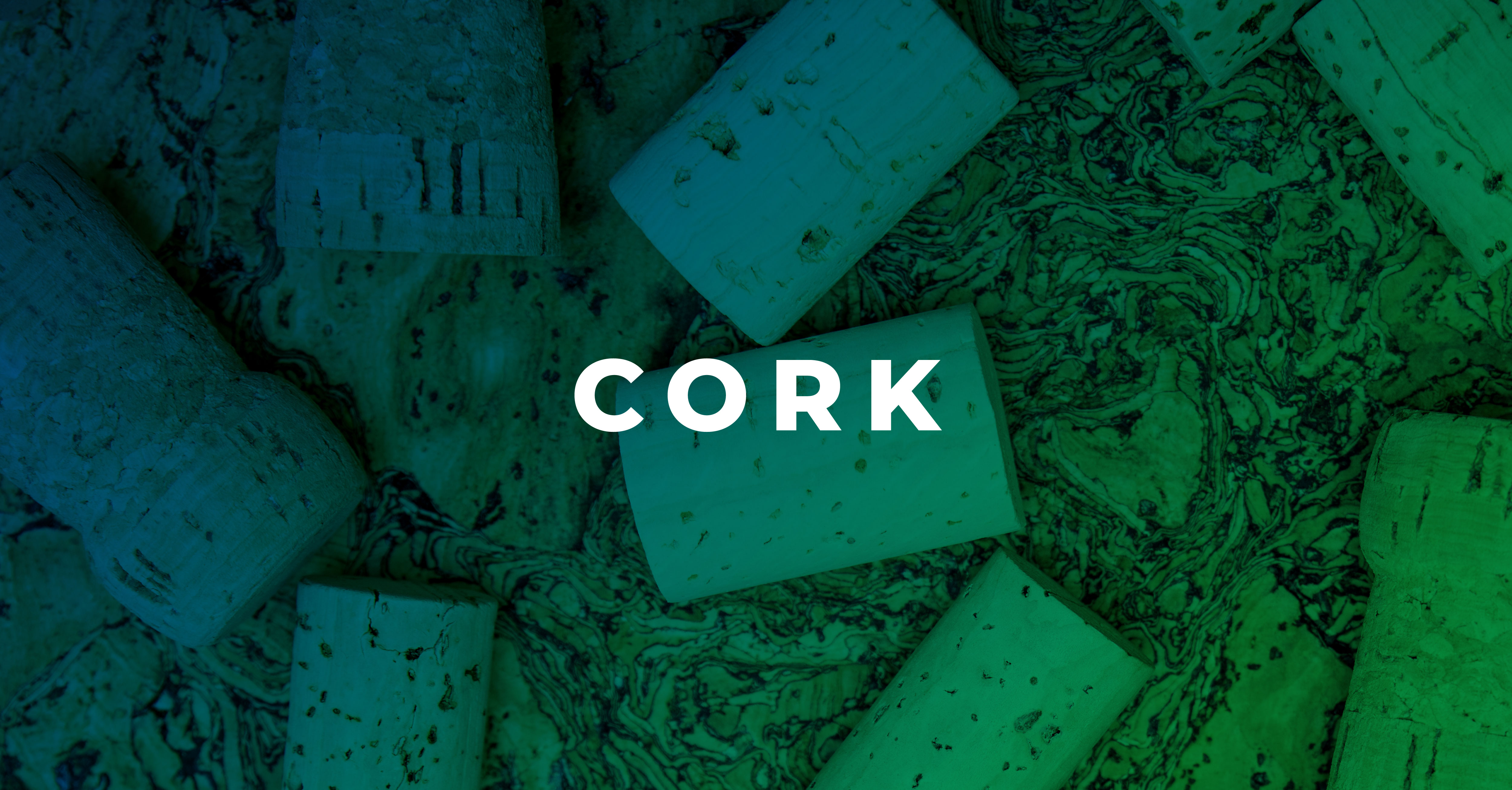
As part of our discussion about the various sustainable materials used in promotional products, this week we take a look at Cork. We usually encounter Cork in the form of a wine stopper or an office bulletin board, but this humble material is extremely versatile and sustainable. In fact, Cork is being used in myriad, inventive ways from cushioned flooring, to wall coverings, and beyond:
What is Cork?
Cork is harvested from a specific layer of bark, usually on the cork oak tree. This layer, called the phellem layer, is composed of a hydrophobic (water-repelling) material that has unique characteristics: it is impermeable, buoyant, elastic, and fire-retardant. The cork oak tree is most commonly grown on the Iberian Peninsula, and Portugal has about 34% of global cork forests while Spain has about 27%. 
Cork is considered to be a sustainable material because the harvesting of cork doesn’t require the cutting down of any trees. The trees grow until they’re about 25 years old and then the cork is stripped from the tree trunks every nine years. These forests are home to endangered and rare species such as the Short-Toed Eagle, the Egyptian Mongoose, the Barbary deer and the Iberian Lynx, as well as biologically important flora and fungi. The presence of the forest also prevents the soil from drying out and turning into a dust bowl.
The first two seasons of cork harvesting actually produce lower-quality cork than later harvests and they are used for flooring, shoe soles, and other products. Cork oaks live for about 300 years, and so there is a vested interest in maintaining them and their cork production over the long term.
Uses of Cork
Due to its versatile properties, Cork has been gaining traction in the design world and is starting to be used in creative ways, from furniture to travel accessories, and flooring to gilded wall coverings. It is a resilient material that can be produced in flat, nearly fabric-like sheets, therefore it has been developed into a range of accessories and housewares, from placemats to luggage tags.
Furthermore, Cork is a great insulator of heat, cold and sound, so it is frequently used on walls, ceilings, and floors to create a quieter space.
And, of course, Cork makes for a great stopper, for a variety of containers not just wine bottles. Because of its hydrophobic qualities, cork stoppers work on both dry and wet goods, and pairs particularly well with wood because of their colour palettes and subtle patterns.
Sustainability
Cork is indeed one of the most eco-friendly resources on the planet. Besides being waterproof, buoyant, elastic, fire resistant and unique in its appearance, it is a naturally harvested material and its cultivation helps the flora and fauna of the relevant ecosystem. The financial viability of cork and cork growers helps provide long term habitat protection for hundreds of animal and plant species. These cork oak forests support one of the world’s highest levels of forest biodiversity, a unique and fragile ecosystem which constitutes a habitat for rare and even endangered species. According to the World Wildlife Fund (WWF) “cork oak forests support one of the highest levels of biodiversity among forest habitats, as well as the highest diversity of plants found anywhere in the world”. So, the best way to support the preservation of these habitats is to choose cork over other synthetic products.
Global Warming

Moreover, Cork harvesting can help in the fight against global warming. At the age of twenty-five the tree's bark can be harvested every nine years, for a period of over 200 years. While cork is growing, it captures carbon dioxide from the atmosphere and each time the cork is harvested, the tree absorbs more CO2 to aid in the bark regeneration process. This means regularly harvested cork trees store three to five times more CO2 than those left unharvested. Given that cork trees can live for up to 300 years, one tree can supply cork for many generations.
Low Footprint
Besides being entirely natural and helping with the preservation of related ecosystems, there is very little processing involved in the extraction of cork. The ecological footprint from extraction until the final product is incredibly low compared to that of plastic production. The reason for Cork has such a low ecological footprint is that it is both recyclable and biodegradable. This means that even during the manufacturing process, cork waste is reused and ground to make agglomerated cork products, never going to waste. Cork powder and other chemical components removed during processing can be salvaged as well, as fuel sources and by-products.
Here in ASL we believe it is important to look into the sustainability of the full life cycle of a product. Cork is definitely a sustainable material when it comes to its cultivation and harvesting. When using this as a raw material the production process needs to be take into consideration in order to measure the sustainability of the final item.
Do you want to learn more about sustainable materials and generate ideas to create more environmentally friendly marketing campaigns? ASL's experts are on hand to provide guidance and support. Why not book a free Sustainability Workshop for your marketing team - we will build a bespoke, interactive workshop session tailored specifically to your brand, delivered in person or online, as required.
Contact us to book your Sustainability Workshop today
ASL Global is committed to conducting our business in a responsible & sustainable way. Acting with passion and integrity, our people work with customers, suppliers and other stakeholders to make a positive contribution to social responsibility and environmental sustainability in communities around the world.

Discover more about our ONE WORLD initiative







